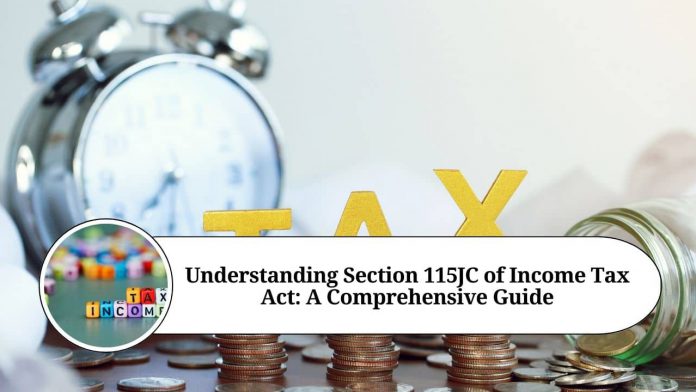Introduction: Section 115JC of the Income Tax Act, 1961 is a relatively new provision that has been introduced to provide relief to taxpayers who have incurred losses due to business restructuring or business reorganization. This provision was introduced in the year 2017 as a part of the Finance Act and has been effective since the assessment year 2018-19. In this article, we will discuss in detail the provisions of Section 115JC of the Income Tax Act and its impact on taxpayers.
Background: Before the introduction of Section 115JC, the tax laws did not provide any relief to taxpayers who incurred losses due to business restructuring or reorganization. Such losses were considered as regular business losses and were subject to the normal provisions of the Income Tax Act. This often resulted in a significant tax liability for the taxpayers, which was a major concern for businesses planning to restructure or reorganize.
Provisions of Section 115JC: Section 115JC provides relief to taxpayers who have incurred losses due to business restructuring or reorganization. The provisions of this section are applicable to companies and limited liability partnerships (LLPs) who have undergone business restructuring or reorganization on or after 1st April 2017.
The following are the key provisions of Section 115JC:
- Computation of Total Income: The total income of the company or LLP undergoing business restructuring or reorganization shall be computed separately for the previous year in which the restructuring or reorganization takes place. This means that the company or LLP will have two separate total incomes for the previous year, one before the restructuring or reorganization and one after the restructuring or reorganization.
- Set-off of Losses: The losses incurred by the company or LLP before the restructuring or reorganization can be set off against the total income of the company or LLP after the restructuring or reorganization. This means that the losses incurred before the restructuring or reorganization can be carried forward and set off against the profits of the company or LLP after the restructuring or reorganization.
- Minimum Alternate Tax (MAT): If the company or LLP has a book profit for the previous year in which the restructuring or reorganization takes place, it shall be liable to pay Minimum Alternate Tax (MAT) under Section 115JB of the Income Tax Act. However, the MAT credit available to the company or LLP shall be the aggregate of the MAT credit available before and after the restructuring or reorganization.
- Additional Depreciation: In case the company or LLP has claimed additional depreciation under Section 32(1)(iia) of the Income Tax Act for any asset in the previous year in which the restructuring or reorganization takes place, the additional depreciation shall be reduced from the written down value of the asset.
- Time Limit for Claiming Relief: The relief under Section 115JC can be claimed only for the assessment year in which the business restructuring or reorganization takes place and for the next seven assessment years.
Impact of Section 115JC on Taxpayers: Section 115JC has provided much-needed relief to taxpayers who have undergone business restructuring or reorganization. The provision allows companies and LLPs to set off their losses incurred before the restructuring or reorganization against the profits generated after the restructuring or reorganization, which reduces the tax liability of the taxpayer.
The provision has also allowed companies and LLPs to claim MAT credit for the entire period of their existence, which was not possible earlier. This has helped in reducing the tax liability of companies and LLPs that have undergone business restructuring or reorganization.
Final Conclusion
In conclusion, Section 115JC is a welcome provision that has provided relief to taxpayers who have incurred losses due to business restructuring or reorganization. The provision has reduced the tax liability of companies and LLPs and has made such transactions more tax-efficient. It is important for taxpayers to understand the provisions of this section and plan their transactions accordingly to take full advantage of the relief provided under this section.



















